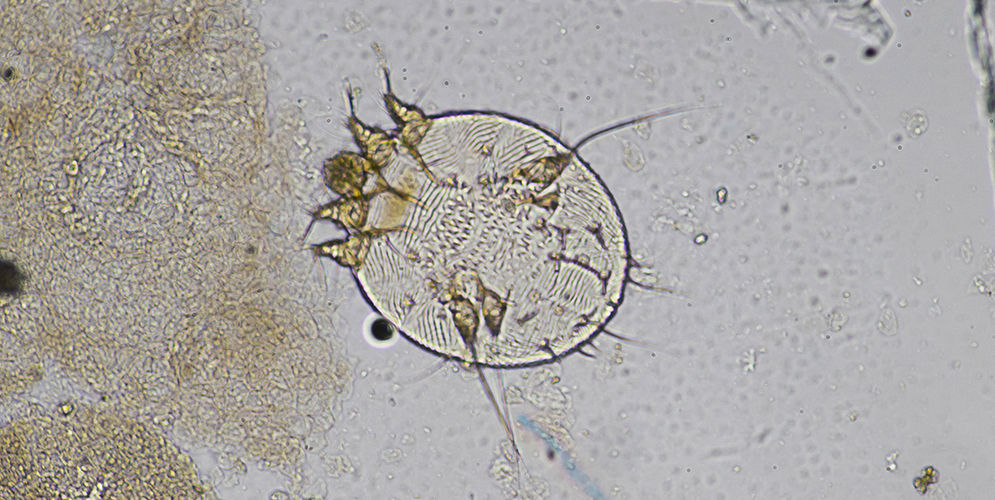Itch mite
(Sarcoptes scabiei)
Biology:
Itch mites are part of the parasitic Sarcoptes genus and are 0.2 to 0.5 mm long, with the females being significantly larger than the males.
Their bodies are similar to a turtle and feature diagonal cuticular grooves. Their legs are stumpy and only the first pair of legs protrudes beyond the edge of the body.
The host is infested by an impregnated female, which tunnels into its skin. She lays her eggs there, then the hatched larvae tunnel through the skin and look for shelter on the surface of the skin in depressions and hair follicles. They feed on skin particles. They develop into adult creatures (imago) over different nymph stages. Females are impregnated on the surface of the skin. The creatures spend their entire development cycle on the host and cannot survive for long away from the host. They are usually transferred to other hosts as a result of close body contact.
Damage:
In humans, itch mites cause an extremely itchy skin condition known as scabies (in Latin, “scabere” means to scratch). This occurs particularly in the warmth of your bed.
If you have scabies, you must report this to the relevant health authorities and seek treatment from a doctor.


